Consensus and Decision Making Lesson Plan

Lesson Plan Mindmap for Consensus and Decision Making – Click to Enlarge
CLICK ICONS TO JUMP DIRECTLY TO EACH SUBJECT ON THIS PAGE








CONSENSUS AND DECISION MAKING LESSON PLAN
This page is a free-shared lesson plan archive for teaching all educational subjects within the context and theme of “Consensus and Decision Making”. It is purposed for use in community education environments, homeschool environments, traditional schooling environments, or as a supplemental and fun addition to any education program. As part of the complete Education for Life Program, this lesson plan is specifically designed to work in conjunction with the other components: Foundations of Teaching, Curriculum, Teaching Strategies, Learning Tools and Toys, Evaluation Model, and The Ultimate Classroom. If you’d like to learn how all these components work together, click here. Click here for the specifics focused on just using the lesson plans:
CLICK HERE FOR A DETAILED TUTORIAL ON HOW TO USE THIS LESSON PLAN
NOTE: The colors are provided as a possible linear progression (red/easiest to violet/most challenging) for people that might prefer a more linear structure. Our core philosophy, however, is that through creativity every color can be made easy or challenging for any learning level.
RELATED PAGES (mouse-over for descriptions and click for complete pages)
EDUCATION OVERVIEW | HOW TO USE THIS COMPONENT | OUR OPEN SOURCE PURPOSE

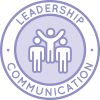
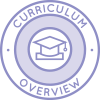
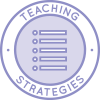
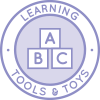
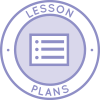
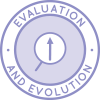
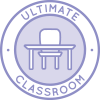
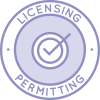

WAYS TO CONTRIBUTE TO EVOLVING THIS EDUCATION PROGRAM WITH US
SUGGESTIONS | CONSULTING | MEMBERSHIP | OTHER OPTIONS
A NOTE ABOUT ALL ONE COMMUNITY LESSON PLANS
The One Community lesson plans are intentionally designed for use in ANY educational environment and with ALL educational, cultural, religious/spiritual, and philosophical approaches to teaching and learning. They are designed without an ideological approach and specifically so they can be adapted to include the views, preferences, methodologies, and/or ideologies preferred by different parents and teachers.
For maximum flexibility and adaptation, they are also designed to be combined to teach multiple subjects at the same time. Doing this increases the creativity, effectiveness, and fun of your learning environment. Once we are on the property and operating our version of the complete school and Education for Life program, we will be adding video examples of how to combine the lessons. In the meantime, visit the Teaching Strategies page for a list of suggestions.
ARTS AND TRADES
CLICK HERE FOR THE COMPLETE SUBJECT OUTLINE FOR ARTS & TRADES
 | TEACHING ARTS AND TRADES WITHIN THE CONTEXT OF CONSENSUS AND DECISION MAKING |

| The Arts- With 3 other people, use a box of crayons and together, choose* 5 colors for each of you to draw with. You all need to come to a consensus and agree on which 5 colors to use. Then, use them to draw or color* a picture together.
- Learn a group folk dance* that is described as the country’s (agreed by all citizens) national dance.
- Create a collage of pictures* that represent the consensus process. Post your collage in a community meeting room.
- Go to an art museum with 5 peers. Each of you observe the art and then rank the pieces in your favorite order. Have a group decision* about the rankings and come to a consensus about which art piece was the most interesting and which piece was the least understood.
- Direct a dramatic play*. Have it performed at your community. When it’s over lead a discussion with the audience. See if you can get a consensus on the most impactful part of the play.
- Participate in, or create and hold, a consensus based decision making process in your community. Create an art piece* based on how this process made you feel. Display the piece in a meeting area in your community.
- Write a symphony* that conveys to the listeners the feelings one goes through when participating in a consensus based process. Videotape an orchestra playing the piece and free share it on you tube.
|

| Trades- Find 5 different materials. Have all your senses, sight, sound, taste, feel and listen, experience the materials and come to a sensual consensus to rank* these materials from most pleasant to least pleasant.
- Play a memory game* with 3 friends. Discuss your memory strategies and then come to a consensus on which strategy led to the most memorized patterns or words.
- Choose a trade from the yellow portion of the molecule and investigate if and how people working together in this field come to a consensus when making decisions about important projects. Write an investigative report* with your findings and free share it.
- Write a 5 to 10 page report* about how various construction workers in different fields, work together to build a house. How do they make decisions on timing and supplies. If and how do they use consensus based decision making and is consensus important in this field?
- Visit a landscape business. Observe if and how the landscapers come to a consensus in the design and implementation of a big project. Write a 3+ page summary* of your observations and free share them.
- Investigate professional trainers/instructors. Watch their teaching style. Make a list of important ways they instruct and if and how consensus based decision making with their client groups is used. Create a review sheet* to give each instructor after your observation.
- Write a manual* for one of the trades in the violet molecule on how individuals in that field can use consensus based decision making in their work. Open source the manual on the internet.
|
| CLICK HERE TO EMAIL US IF YOU HAVE AN IDEA TO ADD TO THIS SECTION |
* Please note that anything with an asterisk is just a suggestion. The diversity of options with asterisks are interchangeable and purposed to stimulate your own ideas. Any one of these suggestions could be replaced with a written paper, any form of art project (drawing, painting, music, paper mache, clay, wood, knitting/embroidery, metals, etc. etc.), an experiment, a presentation, a mindmap, a computer program, a web design project, a piece of poetry or a song, an interpretive dance or play, a group project, or anything else. What we feel is most important is that both the Learner and the Teacher agree on an exercise/activity they both feel would be maximally engaging, fun, and effective. If you come up with an idea we haven’t already thought of, please share it with us.
ENGLISH
CLICK HERE FOR THE COMPLETE SUBJECT OUTLINE FOR ENGLISH
Note: Any language can be substituted for English. The subject is listed here as “English” because that is the primary language of most of the people on the team, and the official language of the country we’re building our initial location in.
 | TEACHING ENGLISH WITHIN THE CONTEXT OF CONSENSUS AND DECISION MAKING |

| - With a group of people, discuss * and come to a consensus about which letters are the easiest and the hardest to use and which are hardest and easiest to write.
- Write a story* where your 6 favorite punctuation marks get together and form a consensus decision, making sure to use all the punctuation marks correctly within the story.
- Write a story* using all 14 punctuation marks, where all the punctuation marks get together and form a consensus decision about the function of each of them, making sure to use all the punctuation marks correctly within the story.
- Pick 5 regional dialects (or any green level item) and write, in a screenplay format*, where each character is a regional dialect and they come to a consensus about which of them has changes the most over time.
- Using “language varieties of different speech communities”, “reflective compositions”, “organization and delivery of oral communication”, and “defining structural features of literature” (or any blue level items, one from each of the 4 sections), write a reflective composition* with the 3 characters who are the other 3 items that you chose making a consensus decision. In this case, have the character of Defining Structural Features of Literature (DSFoL) exploring with the character of Language Varieties of Different Speech Communities (LVoDSC) the best way to help Organization and Delivery of Oral Communication (ODoOC). The end result of their consensus decision should be an argument for the use of 6-10 DSFoLs and 6-10 LVoDSCs within a presentation including 6-10 components of ODoOC.
- Use or study a consensus process to study and explain language variations of gender and age, (or any other indigo level concept. Learn about Aristotle’s “Poetic” then use that style to Write a 6 page tutorial* on how to use what you just learned about language variation to benefit consensus decision making process. Open source your results.
- Choose your preferred violet level aspect of English and create a workshop* where each member of the workshop represents an aspect of the chosen topic. Describe how your workshop would guide all member/aspects of the chosen topic to come to a consensus that represents the form and function and purpose of the the topic itself. Open source it as a fun way to learn the topic you chose.
|
| CLICK HERE TO EMAIL US IF YOU HAVE AN IDEA TO ADD TO THIS SECTION |
* Please note that anything with an asterisk is just a suggestion. The diversity of options with asterisks are interchangeable and purposed to stimulate your own ideas. Any one of these suggestions could be replaced with a written paper, any form of art project (drawing, painting, music, paper mache, clay, wood, knitting/embroidery, metals, etc. etc.), an experiment, a presentation, a mindmap, a computer program, a web design project, a piece of poetry or a song, an interpretive dance or play, a group project, or anything else. What we feel is most important is that both the Learner and the Teacher agree on an exercise/activity they both feel would be maximally engaging, fun, and effective. If you come up with an idea we haven’t already thought of, please share it with us.
HEALTH
CLICK HERE FOR THE COMPLETE SUBJECT OUTLINE FOR HEALTH
 | TEACHING HEALTH WITHIN THE CONTEXT OF CONSENSUS AND DECISION MAKING |

| - Talk* with 3 different experts about spiritual health.* Reflect on if they all agreed on what spiritual health is.
- Participate* in gymnastics. Pay attention to how your body feels and see if your muscles come to a consensus as to which event is the hardest for them to recover from. Share your thought with your gymnastics coach.
- Read 5 different articles* about stress and the ability to bounce back from adversity. Make a collage of pictures* representing any ideas that were presented in all 5 articles.?
- Write a 5 to 10 page paper* on sympathy. Is there an agreed -upon- by- all way of dealing with these hard times? How is it different cultures; and are there any principles of sympathy that have a global consensus?
- Choose a subject from the spiritual health section of the blue level and lead a discussion* with your peers. See if you come to a consensus on the beliefs.
- How can you come to a consensus of positivity with yourself full of self worth and love without a doubt? Experiment with ways to do this. Keep a journal* and record methods that work towards this and ones that sabotage it. After a month or longer, make a presentation of your findings an open source it on the web.
- Write a nutrition guide* based on the consensus ideas of healthy values of nutrients in foods. Distribute your guide to your community members and have them follow the guide for a year recording their daily nutrition along with their daily emotion. After the year have them give you an evaluation of the guide and see if you get a consensus on the information you wrote.
|
| CLICK HERE TO EMAIL US IF YOU HAVE AN IDEA TO ADD TO THIS SECTION |
* Please note that anything with an asterisk is just a suggestion. The diversity of options with asterisks are interchangeable and purposed to stimulate your own ideas. Any one of these suggestions could be replaced with a written paper, any form of art project (drawing, painting, music, paper mache, clay, wood, knitting/embroidery, metals, etc. etc.), an experiment, a presentation, a mindmap, a computer program, a web design project, a piece of poetry or a song, an interpretive dance or play, a group project, or anything else. What we feel is most important is that both the Learner and the Teacher agree on an exercise/activity they both feel would be maximally engaging, fun, and effective. If you come up with an idea we haven’t already thought of, please share it with us.
MATH
CLICK HERE FOR THE COMPLETE SUBJECT OUTLINE FOR MATH
 | TEACHING MATH WITHIN THE CONTEXT OF CONSENSUS AND DECISION MAKING |

| - Defining consensus as 100% agreement on an issue, talk* to 3 adults and have them describe to you about how addition and subtraction can be used for consensus. Draw a picture* as a demonstration what you learned about addition and subtraction in relation to consensus.
- Talk about what type of mathematics is best for coming to or applying consensus. Create and draw/write out* three examples of how to use mathematics in your learning environment.
- Choose the 3 yellow level math concepts you feel will be most helpful for the consensus process. Explain your choices and write 5 demonstration math problems* using each and explain them and how they relate to consensus.
- Write 20 story problems* using green level math concepts and consensus.
- Use the consensus process to create with 50 different math problems* showing real life applications of consensus.
- Show how consensus is a necessity in mathematics. Choose one of each of the bullets for each level (red-violet) in the mathematics molecule and give a speech* on how humanity has come to consensus on each of those mathematical processes.
- Choose a violet level concept (or aspect thereof) where there is not yet consensus and publish an article* about the challenges of coming to consensus on it. Choose another area of mathematics that has reached consensus that you feel may have had a relevant process to forwarding consensus on this area, and write about how it could be an example of how that process may be applied here.
|
| CLICK HERE TO EMAIL US IF YOU HAVE AN IDEA TO ADD TO THIS SECTION |
* Please note that anything with an asterisk is just a suggestion. The diversity of options with asterisks are interchangeable and purposed to stimulate your own ideas. Any one of these suggestions could be replaced with a written paper, any form of art project (drawing, painting, music, paper mache, clay, wood, knitting/embroidery, metals, etc. etc.), an experiment, a presentation, a mindmap, a computer program, a web design project, a piece of poetry or a song, an interpretive dance or play, a group project, or anything else. What we feel is most important is that both the Learner and the Teacher agree on an exercise/activity they both feel would be maximally engaging, fun, and effective. If you come up with an idea we haven’t already thought of, please share it with us.
SCIENCE
CLICK HERE FOR THE COMPLETE SUBJECT OUTLINE FOR SCIENCE
 | TEACHING SCIENCE WITHIN THE CONTEXT OF CONSENSUS AND DECISION MAKING |

| Life Sciences- Look at a picture book of insects with 3 friends. Discuss as a group* and come to a consensus about which insects are the most dangerous.
- Find 3 books on the stages of life. Discuss* the books with an expert and decide if the books have a consensus on their descriptions.
- Choose 5 species and write a 2 page paper* about the scientific consensual theories on reproduction within each species.
- Explain cellular division in a 3 page paper* and include any resemblances between this process and a consensus you might find.
- Is there a consensus on the classification of living things? Investigate this and then present* your findings to a group of younger students.
- Write a scientific report* on homeostasis. Include a section on if and how the principle of consensus is applicable to this process. Publish your results on the internet.
- Teach a general biology class* at freshman college level to introduce the various fields within the subject. At the end of the curriculum have all the students rank the importance of each field of biology. Try to get the group to come to a consensus during 1 class meeting.
|

| Physical Sciences- Choose three or more materials (or states of matter or motions) and act out* them coming together in consensus agreement.
- Write a comic strip* about light, electricity, and magnetism having a consensus style conversation about using their abilities to work together with the components they each move to accomplish a shared goal.
- With the help of an adult/expert create and execute an experiment* where the chemicals work together to create a desired result, and write an analysis* of the experiment in the form of an explanation of the consensus of the molecules, including the scientific explanation of the chemical reaction.
- Merge the complete concepts of consensus and buoyancy (or another green level concept) to create a detailed presentation* that includes explanations/comparisons of how they relate, and include at least one physical example.
- Pick the blue level concept you feel you know the least about or interests you most, and talk to three people about what their explanation of the concept is, and write up a one page paper of the consensus of what all three believe. Then research the concept and write up what you find.
- Choose an indigo level topic to write a 20 page paper* about. Within it, describe the consensus of forces coming together to act upon something. Then, imagine and describe a scenario where one of these force chose not to be in consensus (which may defy a scientific law), and fully describe that scenario and how it affects all the other components within the scenario. Include diagrams, references, and scientific explanations in your paper.
- Choose a physical science concept where the scientific community has not yet reached a consensus, and hypothesize and test a strategy* where a consensus could be achieved. Open source your strategy* so that others may learn from and apply it to other topics.
|

| Earth Sciences- Discuss* weather patterns with 3 other people and try to get everyone to agree on the favorite weather patterns.
- Make a finger puppet play* about the Earth’s components- air,water and land, coming to a consensus about how to best preserve the natural resources of the planet.
- Get together with 3 people and have each person bring 3 different rocks. Identify each rock and then as a group rank* them in order of beautiful appearance, coming to a consensus about the order.
- Investigate shaping earth’s surfaces and see if you can find any form of consensus occurring with the shaping process. Share your results in an open source blog entry* you write about this.
- Read 5 different textbooks or reference books and see if you can find consensus in the theories of stars and galaxies and their evolution. Make a presentation* of your findings.
- Conduct an experiment* based on a hypothesis relating to consensus and structure and composition of the atmosphere.
- Choose a topic from the violet level earth science and collaborate* with scientist in that field to come to a consensus about an emerging new concept. Present* your results in a public forum.
|
| CLICK HERE TO EMAIL US IF YOU HAVE AN IDEA TO ADD TO THIS SECTION |
* Please note that anything with an asterisk is just a suggestion. The diversity of options with asterisks are interchangeable and purposed to stimulate your own ideas. Any one of these suggestions could be replaced with a written paper, any form of art project (drawing, painting, music, paper mache, clay, wood, knitting/embroidery, metals, etc. etc.), an experiment, a presentation, a mindmap, a computer program, a web design project, a piece of poetry or a song, an interpretive dance or play, a group project, or anything else. What we feel is most important is that both the Learner and the Teacher agree on an exercise/activity they both feel would be maximally engaging, fun, and effective. If you come up with an idea we haven’t already thought of, please share it with us.
SOCIAL SCIENCES
CLICK HERE FOR THE COMPLETE SUBJECT OUTLINE FOR SOCIAL SCIENCES
 | TEACHING SOCIAL SCIENCES WITHIN THE CONTEXT OF CONSENSUS AND DECISION MAKING |

| - Get together with 3 friends. Have each friend bring a different choice activity to do. Discuss* the activities and all of you decide and agree on the order you will do the activities.
- Organize a sport* to play with 6 to 10 friends. Come to a consensus of the rules of the game. Play the game and make any rule changes that are needed by consensus.
- Write an essay* about willpower and the relationship between consensus in your body and self control. For example, you mouth craves chocolate but your stomach doesn’t need it, how do willpower and consensus in your body work together to give you self control.
- Study legality, law and order and the judicial system within your culture. Pay attention to the use of consensus within the system and then create a diagram* that shows the decision making processes that occur.
- Make a presentation* about constitutional law and the role, if any, consensus plays in creating,maintaining and changing the laws. Discuss how the constitutional law process affects your community and if and how consensus based decision making influences this. Video* and open source the presentation.
- Conduct an investigation of the industry of the world and their use or lack of use of consensus in decision making. Write a report* of your findings and share the information back with the industries.
- Create a guide for a format* you create for groups of diverse populations to come to a consensus. Test this format at least 4 times in varied communities. Film these experiences and then film your response to how the format worked and free share your final project.
|

| Foreign Languages
(Each of the following is to be completed in the foreign language(s) being studied)- Learn* words for different consensus related concepts.
- Read & write* with words for consensus related concepts.
- Read* ‘consensus’ in fiction.
- Explore & create different types of literature* in relation to consensus.
- Compose a new piece of literature* about consensus.
- Study and write a summary* of the complete history of and writings about consensus words.
- Write a dissertation level paper* on the topic of consensus.
|
| CLICK HERE TO EMAIL US IF YOU HAVE AN IDEA TO ADD TO THIS SECTION |
* Please note that anything with an asterisk is just a suggestion. The diversity of options with asterisks are interchangeable and purposed to stimulate your own ideas. Any one of these suggestions could be replaced with a written paper, any form of art project (drawing, painting, music, paper mache, clay, wood, knitting/embroidery, metals, etc. etc.), an experiment, a presentation, a mindmap, a computer program, a web design project, a piece of poetry or a song, an interpretive dance or play, a group project, or anything else. What we feel is most important is that both the Learner and the Teacher agree on an exercise/activity they both feel would be maximally engaging, fun, and effective. If you come up with an idea we haven’t already thought of, please share it with us.
TECHNOLOGY AND INNOVATION
CLICK HERE FOR THE COMPLETE SUBJECT OUTLINE FOR TECHNOLOGY AND INNOVATION
 | TEACHING TECHNOLOGY & INNOVATION WITHIN THE CONTEXT OF CONSENSUS AND DECISION MAKING |

| Technology- Gather 5 machines that do not require electricity and rank *them in your favorite order. Find 3 people to also rank them and then discuss *the order together until you reach a consensus.
- Write a story* where three or more simple machines come together in a consensus agreement on something.
- Practice your typing* using the consensus based recommended drills. Record your improvement over a month’s time of practice.
- Choose a bullet from the green level and investigate a field and observe* how consensus based decision making is used. Write a brief summary* for the people you observed outlining what you witnessed.
- Evaluate software to identify what you consider to be the most appropriate software to gather the input from a diverse group of people to help the group reach consensus decisions effectively. Apply* it to a group making a decision, and create a multimedia presentation* to report on your results.
- Write a dialogue* that shows your idea of how 5 people listed in the indigo level might have had a discussion resulting in consensus on a technology related item that applies to each of their contributions. Videotape* actors reading your script and open source it on the internet.
- Choose a field from the violet level and write a how-to guide* for individuals and corporations in that area to use consensus based decision making in their daily practice. Give the guide to a company for a test run. After 1 month of practice, return to the organization to receive input on the results the company and individuals within the company experienced. Make any necessary edits to the guide from their review and then open source it.
|

| Innovation- Talk to 3 experts about learning strategies and ask them to come to a consensus about which learning strategy is the best fit for you while you watch and listen. Discuss* your experience afterward.
- Read 3 books* about emotional strategies and find at least one strategy that the book’s authors all agree on.
- Attend an objective type event like a sports game and interview 15 people about their belief constructs. Write a 3 to 5 page paper* about getting consensus on belief constructs within this group of strangers.
- Find a meditation practice that brings your body to a consensus of total relaxation. Do this practice daily for a week and notice and document* any changes having your whole body working together does for your energy and outlook.
- Investigate one of the systems from the blue level and write a blog article* for the internet about the use of consensus within this system. Free share your blog.
- Choose a project planning software to learn and understand, and turn it into a consensus decision making tool and develop a strategy* for using it for this purpose. Apply your strategy* in a group of 10 or more people that have a decision that needs to be made and open source your strategy*, process, and results.
- Imagine you have 500+ people consisting of two groups with opposing views forced to make a consensus decision together. With that in mind, develop and open source a strategy* for using one or more softwares and/or technologies for consensus decision making for any size group of people (this may include developing software that does not yet exist).
|
| CLICK HERE TO EMAIL US IF YOU HAVE AN IDEA TO ADD TO THIS SECTION |
* Please note that anything with an asterisk is just a suggestion. The diversity of options with asterisks are interchangeable and purposed to stimulate your own ideas. Any one of these suggestions could be replaced with a written paper, any form of art project (drawing, painting, music, paper mache, clay, wood, knitting/embroidery, metals, etc. etc.), an experiment, a presentation, a mindmap, a computer program, a web design project, a piece of poetry or a song, an interpretive dance or play, a group project, or anything else. What we feel is most important is that both the Learner and the Teacher agree on an exercise/activity they both feel would be maximally engaging, fun, and effective. If you come up with an idea we haven’t already thought of, please share it with us.
VALUES
CLICK HERE FOR THE COMPLETE SUBJECT OUTLINE FOR VALUES
 | TEACHING VALUES WITHIN THE CONTEXT OF CONSENSUS AND DECISION MAKING |

| - Draw a picture* of what you feel is the most important agreement and/or decision you have made with another person.
- Create a collage* showing 10 activities that require agreements and/or that you and others have made decisions together about. Write 2-3 sentences about each activity you chose. Write a summary about how agreed upon decisions affect to you.
- Create a list* of 20 different family decisions/agreements, and rank them in the order of how much you would value having a consensus/agreement process around them. Talk about your list with your family.
- Choose the 10 values from the green level that you think consensus would be the most benefit in,. Explain why you chose those values over all the others and devise a specific strategy* for how to use consensus to support each of them individually in your life.
- Make a list* of all the blue level values and order them from most easily benefited from consensus to least easily benefited by consensus. Choose the bottom 20 and and write* 3 examples for each one where consensus could still benefit those strategies.
- Pick the 10 indigo level values that you feel are most controversial and lead a discussion and come to a consensus with a group of at least 5 people about what is the true meaning and purpose of these values within your culture. Write a 5 page paper* on both the group results and experience and what you personally learned of consensus and each of the values.
- Pick a value in the violet level that that you feel has the richest history of conflict and division. Create and give a multimedia presentation* explaining the history and offering a consensus-based possible solutions/strategy to solve some key area of conflict or division.
|
| CLICK HERE TO EMAIL US IF YOU HAVE AN IDEA TO ADD TO THIS SECTION |
* Please note that anything with an asterisk is just a suggestion. The diversity of options with asterisks are interchangeable and purposed to stimulate your own ideas. Any one of these suggestions could be replaced with a written paper, any form of art project (drawing, painting, music, paper mache, clay, wood, knitting/embroidery, metals, etc. etc.), an experiment, a presentation, a mindmap, a computer program, a web design project, a piece of poetry or a song, an interpretive dance or play, a group project, or anything else. What we feel is most important is that both the Learner and the Teacher agree on an exercise/activity they both feel would be maximally engaging, fun, and effective. If you come up with an idea we haven’t already thought of, please share it with us.
OTHER RESOURCES
We're building a resource section. Click here if you have a suggestion or resource for this page.
OPEN SOURCE SUBJECT RESOURCES (click icons for complete pages)



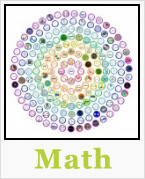



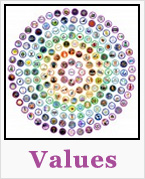
OPEN SOURCE CURRICULUM OUTLINES (click image for summaries and links to complete pages)
CARE
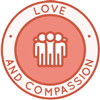

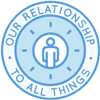

SHARE
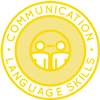
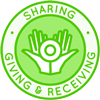

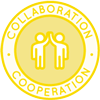
PLAY
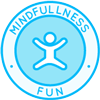
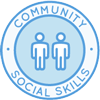
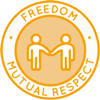
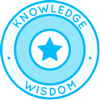
OPEN SOURCE TEACHING METHODOLOGY SUMMARIES
Montessori | Waldorf | Orff | Reggio | Multi-Intelligence | Bloom's Taxonomy | Study Tech | I-WE
INDEX OF ALL THE ONE COMMUNITY OPEN SOURCE LESSON PLANS

Click this image for the Lesson Plans for Life page with links to the rest of the lesson plans
THE WORLD'S LARGEST ONLINE FREE EDUCATION RESOURCE ARCHIVE
RELATED CONTENT AND OTHER RELATED RESOURCES
We're building this resource section. Click here if you have a suggestion or resource for this page.
























 One Community
One Community



